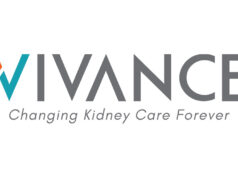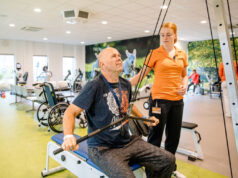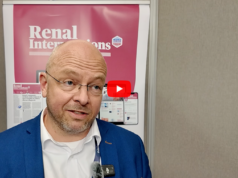
Attendees at this year’s UK Kidney Week (UKKW; 7–9 June, Birmingham, UK) heard that—based on a recent, single-centre study—peritoneal dialysis (PD) appears to be a safe and effective modality choice for patients following the loss of their kidney graft. The study in question was presented by Shingai Pepereke (University Hospitals of Leicester NHS Trust, Leicester, UK), who asserted that it provides evidence to support the inclusion of PD in the post-transplant decision-making process.
Pepereke began by noting that post-kidney transplant patients do not tend to have the same access to the advanced, multidisciplinary care they would have had prior to first receiving renal replacement therapy (RRT). Global registry data indicate that somewhere between 2% and 18% of patients initiate PD after graft loss—meaning the majority go onto haemodialysis, despite existing data also suggesting similar outcomes between the two modalities.
As such, Pepereke and her team set out to assess whether PD is an acceptable modality after graft loss via a retrospective, observational, single-centre study, which took place from January 2012 to January 2022 and included 52 patients. She told the UKKW audience that the study’s goal was to ultimately inform quality improvement processes, optimise RRT planning and improve outcomes for post-transplant patients. The study also assessed PD infection risks while continuing low-level immunosuppression and evaluated the impact of continued immunosuppression on preserving residual kidney function, Pepereke detailed.
Discussing peritonitis occurrence, she noted that the rate of infection in the prior transplantation group (0.4 per year) was slightly higher than that seen in a non-transplantation group derived from historical cohort data over the same time period (0.3 per year). Pepereke also reported that the technique survival rate in the graft-loss cohort was slightly lower as compared to the overall PD patient population, but patient survival was “very similar” between the two groups at 92% and 91%, respectively. “Seven of the patients in our graft-loss group went on to be transplanted again, which shows that PD was successfully used as a bridge to further retransplantation,” she added.
The speaker also stated that the rate of decline in glomerular filtration rate (GFR) was used to measure decreasing residual kidney function, with a decline of 1.6ml per minute, per year, being observed in the prior-transplant patients, compared to a “quite comparable” rate of 1.87ml per minute, per year, in those who had not previously had a transplant.
Pepereke then relayed that her team’s research demonstrated similar results to two major registry studies, from the USA and France, that have been conducted in this space to date, achieving comparable one-year patient and technique survival rates despite featuring a slightly older cohort of patients.
“We were able to demonstrate that PD is a safe and effective dialysis modality after graft loss,” she concluded. “And, while peritonitis rates may be slightly higher when compared to the whole PD population, they are still [in line] with the updated ISPD [International Society for Peritoneal Dialysis] 2022 guidelines, which say a risk of 0.4 episodes per year is acceptable.
“We feel that the presence of a renal allograft really should not preclude percutaneous catheter insertion—in fact, it brings advantages, because a lot of these patients will be at a higher risk under general anaesthesia due to their comorbidities. Ultimately, [these findings are] encouraging in showing that PD should be included as part of shared decision-making when we are planning dialysis modality choices in patients approaching renal allograft low clearance.”












